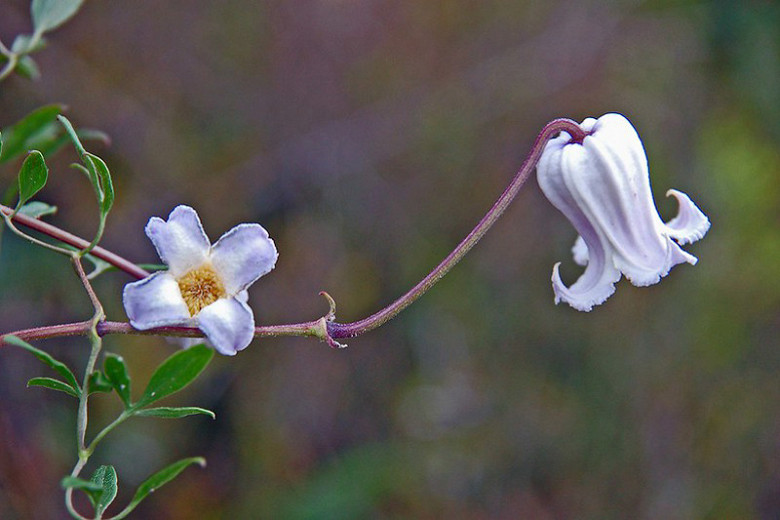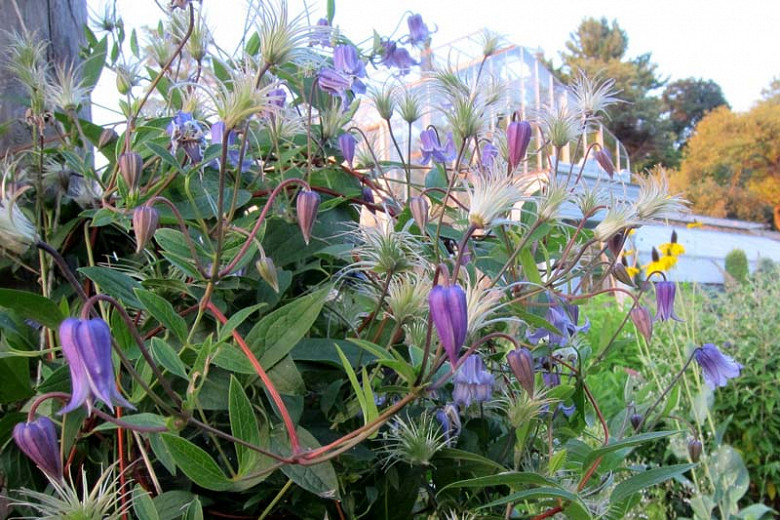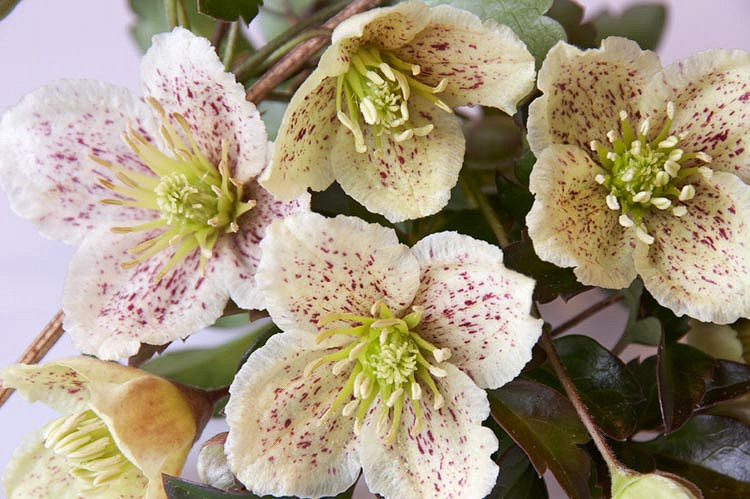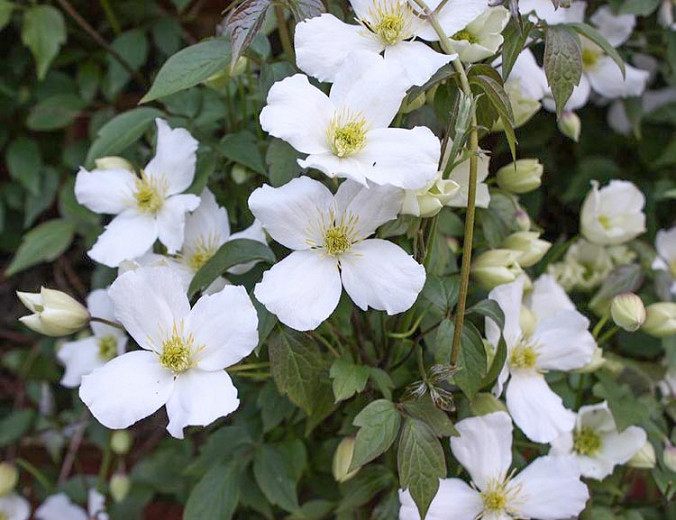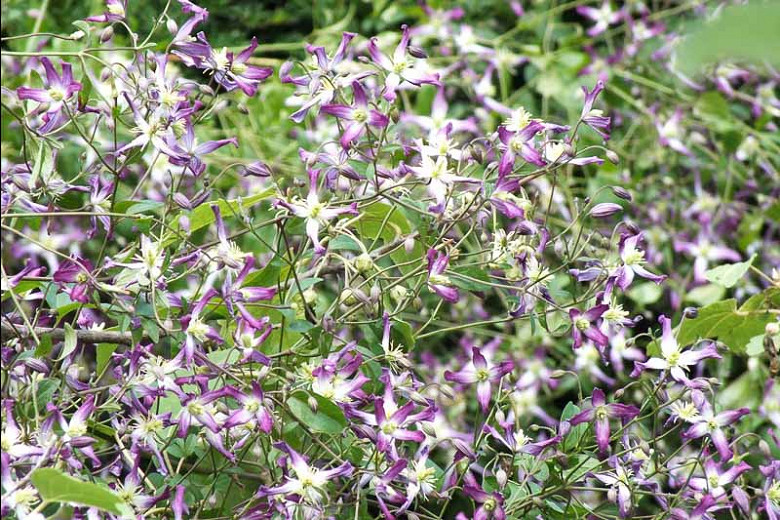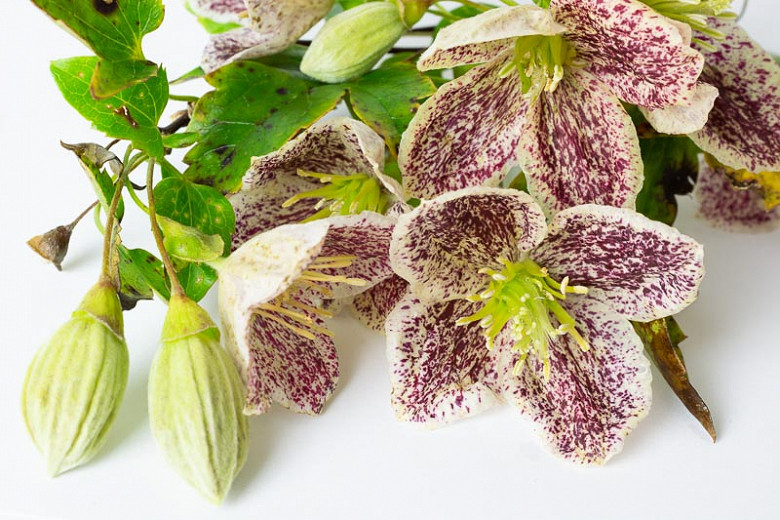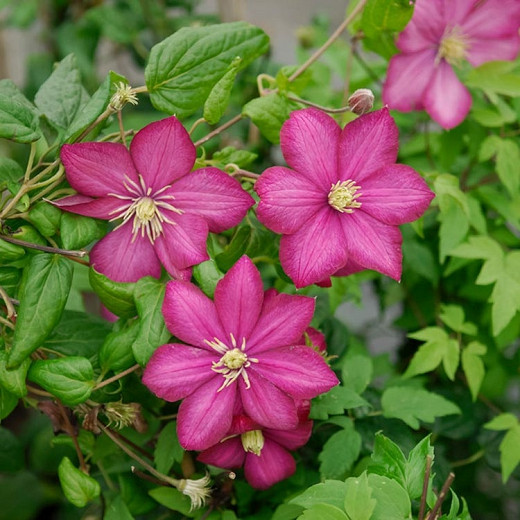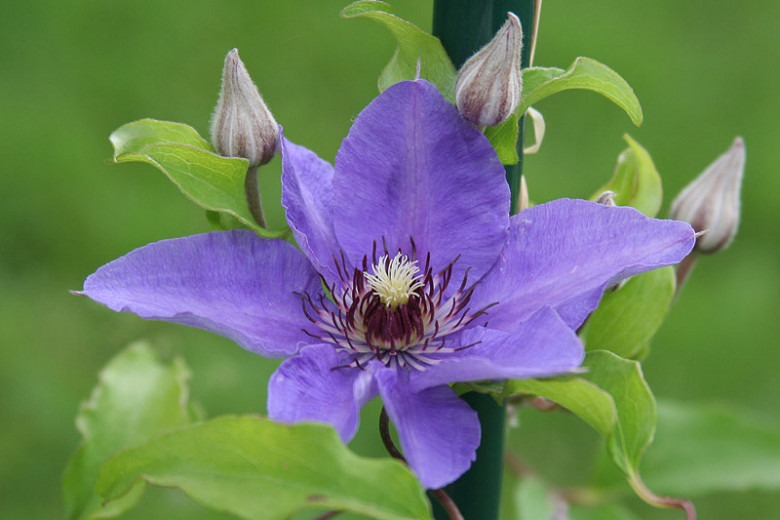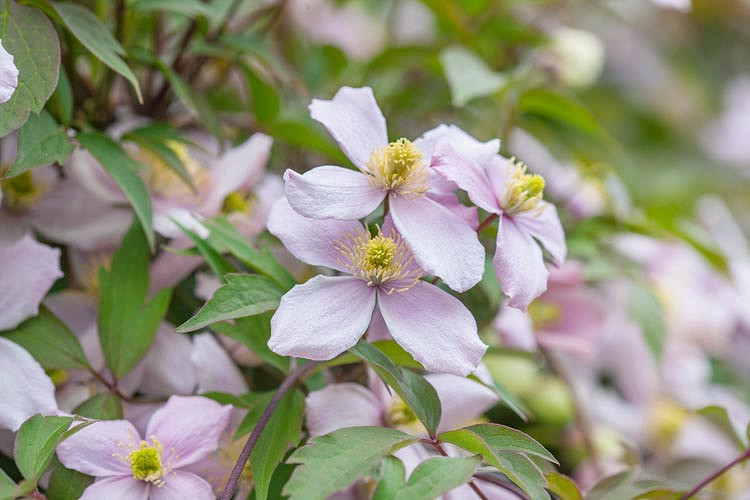Clematis crispa (Viorna Group)
Clematis crispa (Blue Jasmine) is a herbaceous, perennial climber boasting masses of mildly fragrant, nodding, bell-shaped, pale blue to violet blue flowers, 1-2 in. wide (2-5 cm). Blooming from early spring to early fall, each long-lasting flower bears 4 petal-like lobes recurved at the tips and slightly frilled margins. Blooming profusely over a very long season, Blue Jasmine has a handsome foliage of pinnately compound leaves divided into 3-5 linear to ovate leaflets. The blossoms are followed by very ornamental, fluffy seedheads, which remain on the plant, adding further interest. Vigorous and floriferous, Blue Jasmine climbs by means of twining petioles. It can twine through nearby shrubs or simply be allowed to ramble across the ground. It loses its leaves in mild winters, dies to the ground in harsh winters, then reliably comes back in the spring. The charming flowers attract a variety of pollinators and the seeds provide food for many birds and small wildlife. Blue Jasmine does well on a fence or trellis and makes good cut flowers.
- Grows up to 6-10 ft. long (180-300 cm) and 3-6 ft. wide (90-180 cm).
- Thrives in rich, moist to wet soils, in full sun or part shade. Ideally, Clematis prefer having their 'heads in the sun and their feet in the shade'. Keep the roots cool and shaded by other plants or add a layer of pebbles or flat stones at the base. Tolerant of a wide range of soil types, including dry sandy, loamy, mucky or clay soils.
- This Clematis belongs to the third group of Clematis – a group including Clematis which flower in late summer on growth made in that season. They should be pruned in late winter or early spring and require 'hard pruning': simply cut back the stems to a pair of strong buds about 1ft. (30 cm) above ground level before growth begins in early spring.
- Keep an eye out for powdery mildew, leaf spots, rust, aphids, vine weevils, slugs and snails, scale, earwigs or spider mites. Deer resistant.
- Propagate by seeds, root cuttings or softwood cuttings.
- Native to wet sites as swamps and flood plains of the southeastern United States.
- Toxic to dogs, toxic to cats, toxic to horses.
Requirements
| Hardiness | 6 – 9 |
|---|---|
| Plant Type | Climbers |
| Plant Family | Clematis |
| Exposure | Full Sun, Partial Sun |
| Season of Interest | Spring (Early,Mid,Late)Summer (Early,Mid,Late)Fall |
| Height | 6' – 10' (180cm – 3m) |
| Spread | 3' – 6' (90cm – 180cm) |
| Spacing | 36″ – 72″ (90cm – 180cm) |
| Water Needs | Average, High |
| Maintenance | Low |
| Soil Type | Clay, Loam, Sand |
| Soil pH | Acid, Neutral |
| Soil Drainage | Moist but Well-Drained, Moisture Retentive |
| Characteristics | Cut Flowers, Fragrant, Showy |
| Native Plants | United States, Midwest, Illinois, Missouri, Southeast, Alabama, Arkansas, Florida, Georgia, Kentucky, Louisiana, Mississippi, North Carolina, South Carolina, Tennessee, Virginia, Southwest, Oklahoma, Texas |
| Tolerance | Clay Soil, Deer, Wet Soil |
| Attracts | Birds, Butterflies, Hummingbirds |
| Garden Uses | Arbors, Pergolas, Trellises, Ground Covers, Walls and Fences |
| Garden Styles | Informal and Cottage |
